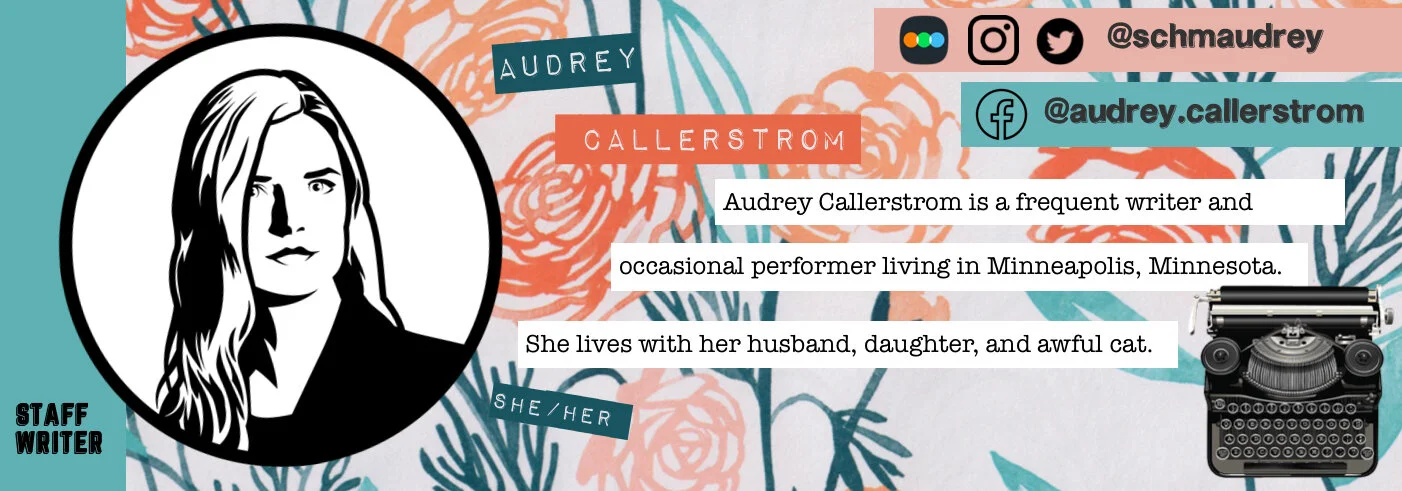On the 20th Anniversary of GHOST WORLD and 99% of Humanity
by Audrey Callerstrom, Staff Writer
Seymour: I can’t relate to 99% of humanity.
Even films about so-called nerds or outcasts usually paint high school in a sentimental light. Each high school graduation scene is intended to be emotionally stirring. Don’t you remember it? Well, OK, fine. But what about how high school was for the rest of us? For me, it was like spending four years in wet clothes.
Welcome to Ghost World.
At their high school graduation, best friends (though they would never use the term) Rebecca (Scarlett Johansson) and Enid (Thora Birch), throw their caps on the ground, stomp on them, and flip everyone off. Rebecca and Enid roll their eyes through graduation parties and run-ins with peers. Enid likes to try on disguises. She tries to go punk. She dyes her hair green, and the next day, she dies it back. A guy accuses her of doing it ironically; she insists it’s an authentic rendition, and gets offended that it was misinterpreted. She dances to Bollywood pop songs in her room. Meanwhile, Rebecca is equally dissatisfied with the status quo, but is more willing to play along with the facade. Ghost World was filmed in Los Angeles, but it takes place in Anywhere, U.S.A.
Ghost World is a faithful adaptation of the graphic novel of the same name by Daniel Clowes. Clowes’s work also inspired films like Art School Confidential and Wilson, and he did the poster artwork for Happiness and the artwork for cans of OK Soda. The novel was about Enid and how she navigates her place in the world now that she finally has some freedom to do what she wants, though she’s not sure what that is. The film explores more of the dynamics of Enid’s friendship with Rebecca, as well as the character of Seymour (Steve Buscemi), a victim of their cruel prank. In the novel, Seymour was a sad face at the other end of the restaurant when Enid and Rebecca watch him prepare to meet a woman who doesn’t exist. In the film, Seymour and Enid become something resembling friends, although Seymour is in his 40s. They’re both smart, funny, and deeply cynical.
Ghost World was the first non-documentary from director Terry Zwigoff, who had previously helmed the heartbreaking Crumb about cartoonist Robert Crumb. What’s novel about Ghost World is that Zwigoff sought out young actors who were close in age to their characters, rather than using actors in their 20s. Birch was about 17 at the time of filming; Johansson was 16. Both were child actors. Birch had just appeared in American Beauty and Johansson received critical acclaim for a role in the indie Manny and Lo. Their performances are a bit of a weak link in what is overall a terrific and original film. It feels like Zwigoff was a hands-off director, and at times the line readings didn’t have the impact they could. The laugh out loud remarks and jokes of the novel don’t always translate to the screen. There are some terrific supporting performances here, too. Illeana Douglas plays an art teacher, and Enid’s well-meaning dad who is too subtle about telling Enid to apply for college is played by an aptly cast Bob Balaban. David Cross appears in a scene trying to flirt with Rebecca at a party by saying, “You’re wearing green. What are you, Irish?” Ultimately, Enid decides that you cannot give in to complete cynicism, because it can, like with Seymour, fester into decades of deep depression.
Part of me thinks that Ghost World was the beginning of the end of the indie boom. Throughout the 1990s there was a wealth of really, really good independent cinema, and people left their homes to go out and see them. In the 2000s, however, piracy grew and grew, and studios had to steer away from believing in smaller, original films and instead focus on what would make money overseas. There are still good films out there, but you really have to look for them. You have to dig, grow accustomed to following certain directors and actors, and you have to use things like Letterboxd and (audible groan) “Film Twitter”. In 2001, though, Roger Ebert (in prime time when people were watching) praised Ghost World on Ebert & Roeper, saying “I wanted to hug every moment of this movie. I really love it.” It’s hard to see where there might have been a legacy with Ghost World, but I hope that more of Clowes’ work (such as his time travel story Patience) will be adapted for screen, and perhaps maybe one day we will get to revisit the characters of Ghost World again.





